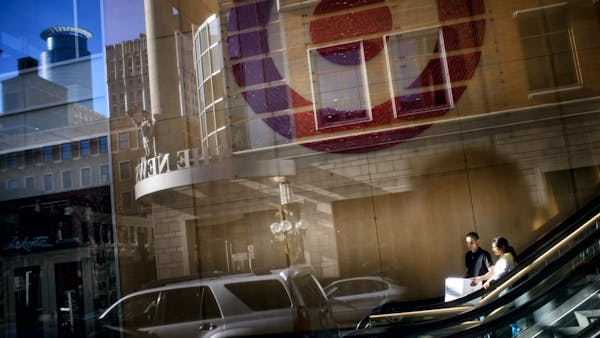Early Tuesday morning, the posts on social media and chat rooms made it clear that Target Corp. was getting on with the hard work of laying off hundreds of people at its Minneapolis headquarters.
The meetings all came off at 8:45, and no one who got an invitation could have been surprised at what was coming. Last week, the company, as almost an afterthought in an overview of its strategic plans, said up to "several thousand" headquarters jobs would go.
And so it happened, 1,700 employees all told they no longer had a job. They picked up their personal stuff and walked out into the sunshine of a glorious Minnesota spring day — a day that clearly marks the end of an era at the bluest of the state's blue-chip companies.
When the confirmation from the company Tuesday morning indicated 1,700 people were let go, the thought here turned immediately to how a company could possibly lay off that many employees in a morning. No company, however big and efficient, can manage that unless it lays people off in groups.
That's exactly what happened.
The posts on social media about the job losses had so many acronyms related to Target's bureaucracy that it was difficult to understand who actually got laid off. It was clear, though, that whole teams of people were out.
That, too, could have been foreseen. When the company said "several thousand" of its 13,000 or so headquarters employees in and around Minneapolis would go, it was obvious this wasn't going to be a case of cherry-picking the poor performers and sending them home.
It wasn't going to be any 5 percent reduction across the board.
To eliminate that many jobs, whole departments had to go. With them went jobs that last week seemed important enough to be staffed by high achievers recruited from the best universities and business schools.
This week, these jobs are simply no longer necessary.
For the people who learned they no longer had a job, there's no such thing as a good layoff. They may have cash in their checking accounts and great prospects before them, but a job that goes away is a loss that must be grieved.
It's also important to understand that most of the people let go held the kind of jobs that fill the dreams of community economic development staffs, with compensation into six figures and a high level of skill and training. People came to Minneapolis from all over to fill them.
Top business schools seem to send most grads into consulting firms like McKinsey & Co. or Accenture, but Target shows up as a top employer at such top-shelf schools as the Kellogg School of Management at Northwestern University.
And in a little indicator of just what kind of jobs at Target these were, Kellogg reports that the average starting salary of its 2013 grads going to work for a retailer was more than $109,000.
Having smart young people come here — and stay — is how the Twin Cities became a metro area that's among the leaders in median income, educational attainment and other economic measures. Target executives said last week that the company will continue to hire people with unique skills, such as in data science, but the region clearly just took a step backward.
Those laid off who came to work for an innovative retailer but never really did warm up in the winter will likely leave town. With any luck, others will stay put and bring their skills to some of the other top companies or kick-start their own businesses.
If the latter is the case, even a layoff of this magnitude is something that our vibrant and diverse economy will mostly shrug off.
But at Target itself, a mass layoff like what just happened means nothing will be quite the same again.
As senior executives explained last week, getting rid of several thousand jobs wasn't done to "make Wall Street happy" or because the company could no longer afford to pay that many people.
Cutting jobs at headquarters saves money, sure, but more important it makes the work simpler. Some tasks can get done faster, some need not be done at all.
It's a process that could take a couple of years, too, so there's no reason today to think 1,700 is going to be the end of the layoffs.
That means this is not going to be anything like a normal corporate layoff, with a company staffing back up once the business turns around.
These jobs are gone, and it is difficult to see when they would be coming back. It's likely they never do.
lee.schafer@startribune.com • 612-673-4302

Schafer: What do you really need to retire?

Schafer: How doing business can be a bit more like Christmas morning

Schafer: There won't soon be another opportunity to rethink the I-94 corridor

Schafer: The fruits of Honeywell's long-game dedication to quantum computer now being seen


